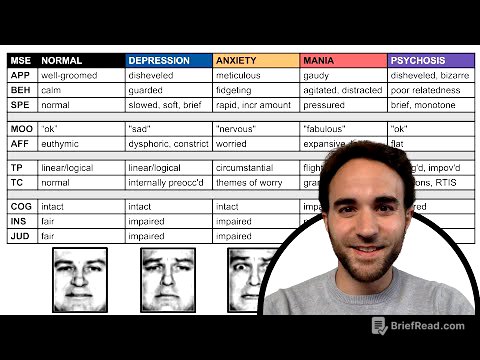TLDR;
This science lesson for 8th grade focuses on understanding how isotopes influence average atomic mass. It covers key concepts like weighted averages, relative abundance, and real-world applications of isotopes in fields like medical imaging and carbon dating. The lesson incorporates activities such as comparing isotopes using Venn diagrams and researching current uses of isotopes in various fields, culminating in a presentation and reflection on the importance of understanding these concepts.
- Isotopes are atoms of the same element with different numbers of neutrons.
- The average atomic mass is calculated using a weighted average based on the relative abundance of isotopes.
- Isotopes have significant real-world applications in medicine, carbon dating, and energy.
Introduction [0:03]
The lesson introduces the influence of isotopes on average atomic mass, a topic for science 8, second quarter, week three and day four under the matatag curriculum. The objectives include describing the concept of weighted average, researching real-world applications of isotopes, and appreciating the importance of relative abundance in determining accurate atomic mass.
Review of Isotopes and Atomic Mass [1:28]
The lesson summarizes isotopes and atomic mass, highlighting key points from previous lessons. Isotopes are atoms of the same element with varying numbers of neutrons, while the atomic number, defined by the number of protons, remains constant. The mass number is the sum of protons and neutrons, which differs among isotopes. Atomic mass is the weighted average mass of an element's isotopes, based on their relative abundance, which is the proportion of each isotope in a sample. Isotopes are important in scientific research and practical applications, such as medical imaging where isotopes like technetium-99 are used for non-invasive internal scans.
Explanation of Isotopic Influence on Atomic Mass [2:59]
Isotopes influence the average atomic mass of an element because they are atoms of the same element with different numbers of neutrons, leading to different mass numbers. The average atomic mass considers the masses of all isotopes and their relative abundances. A weighted average is used to calculate the atomic mass, where each isotope's mass is multiplied by its relative abundance, reflecting each isotope's contribution to the element's overall atomic mass.
Activity: Comparing Isotopes of Nitrogen [3:55]
Students compare isotopes of nitrogen (14, 15, and 16) using a Venn diagram to illustrate the differences in the number of neutrons and mass number. The activity aims to show how isotopes influence the average atomic mass of an element and their applications. Students label subatomic particles and identify the uses of each isotope.
Research Assignment: Real-World Applications of Isotopes [4:54]
Students choose a real-world application of isotopes, such as carbon dating, medical imaging, or nuclear energy. They research and summarize the application, including the isotope used, its properties, and its significance.
Lesson Activity: Research and Presentation on Isotope Use [5:16]
Students research and present a current use article related to isotopes in real-world applications like carbon dating, medical imaging, nuclear energy, and environmental studies. They need access to the internet, newspapers, or scientific journals. The procedure involves finding articles, understanding key points, writing down important information, and summarizing the article.
Procedure for Research and Reporting [5:59]
The procedure includes looking for news articles online from credible sources, carefully reading the articles, writing down important information such as the type of isotopes discussed, the specific application, its significance, how the isotope is used, and any benefits or challenges mentioned. Students then write a summary of the article in their own words, including an introduction, the main points, and an analysis of the isotope's role and impact.
Written Report and Presentation [6:56]
Students submit a written report of one to two pages that includes the title, source of the article, a summary, analysis, conclusion, and references. If required, they should be prepared to present their findings to the class on the assigned date.
Generalizations and Reflection [7:24]
The lesson concludes by asking learners why understanding the concept of relative abundance is important in calculating the atomic mass of an element. Students write a short reflection on what they learned about isotopes and atomic mass and how it applies to real-world scenarios.









